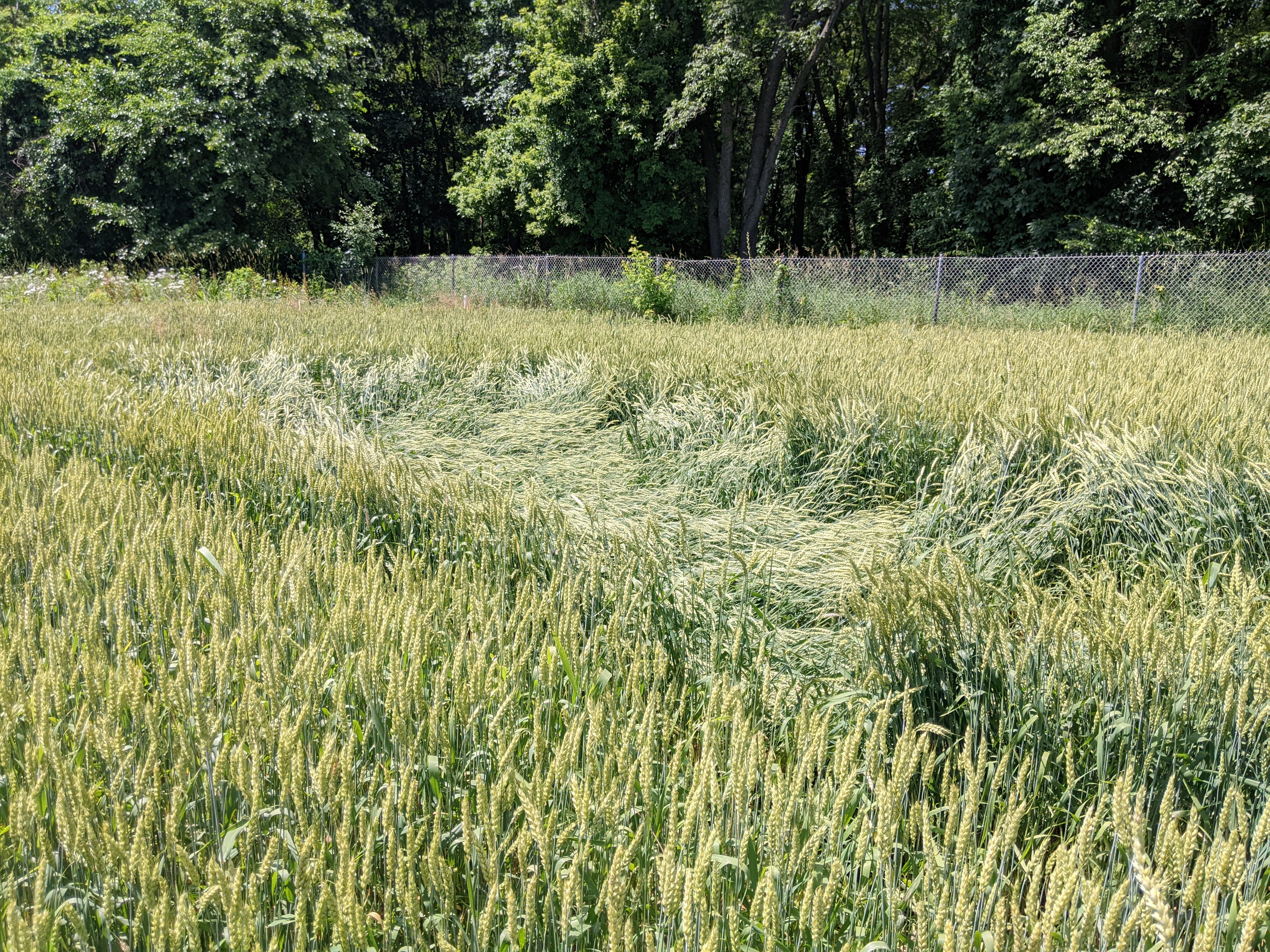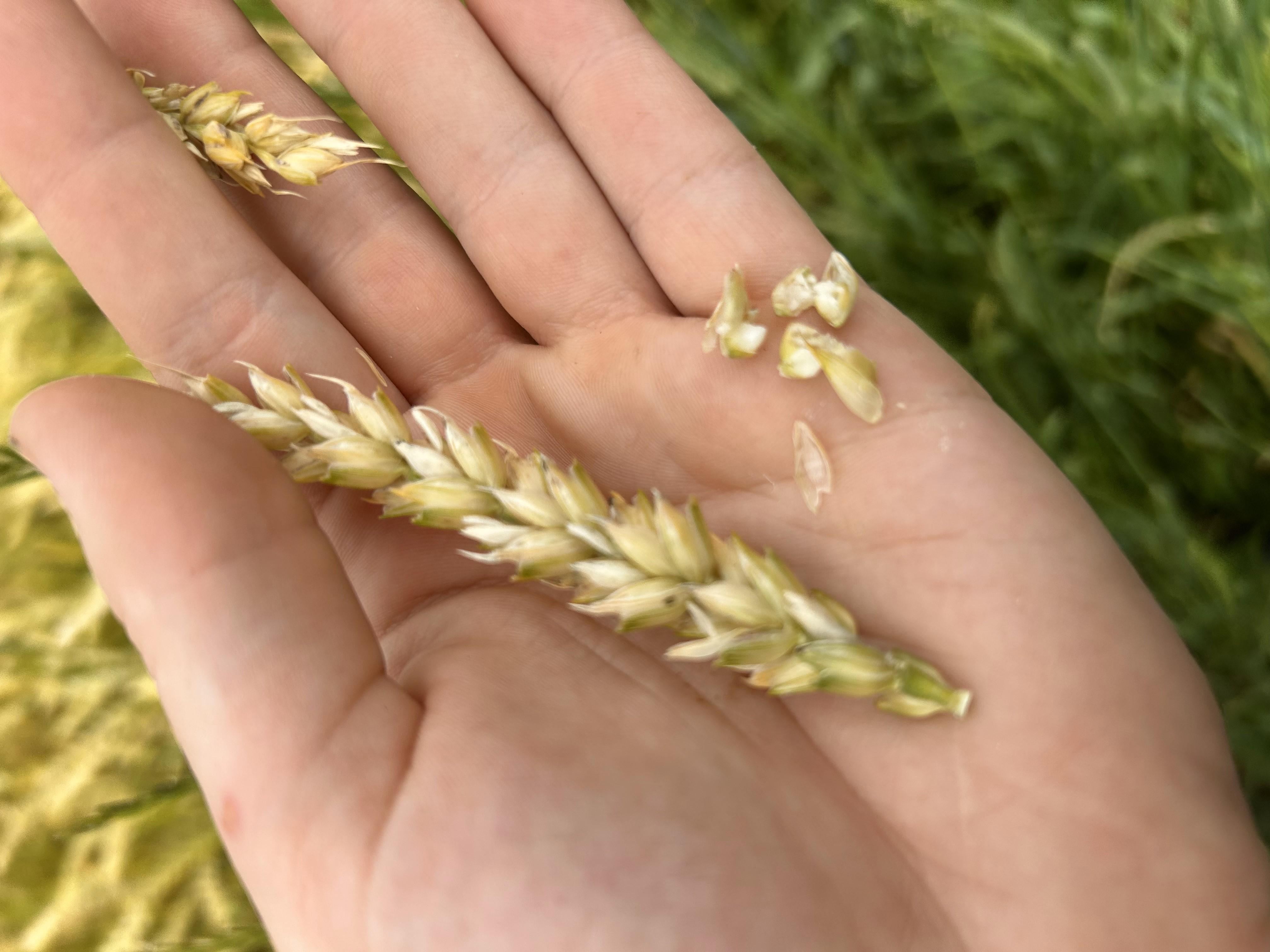Wheat watchers week of June 17, 2024
See how the wheat crop is progressing across the state this week.

This report is only possible because of our agribusinesses and farmers who participate as wheat watchers. If you are interested in being a wheat watcher, especially if you see your area isn’t represented, please reach out to MSU Extension field crops educator Jenna Falor at falorjen@msu.edu.
Overall, this week reporters are seeing wheat stands in good condition, but with some concerns due to weather during grain fill, ranging in Feekes growth stage 11.1-11.2 across the state.
Southwest region
We had two wheat watchers reporting in from southwest region. One from Barry County near Hickory Corners, Michigan and one from St. Joseph County near Centreville, Michigan. Wheat is reported to be at Feekes 11.1-11.3, which means that it is either at a milk stage, soft dough stage or has reached physiological maturity. The watcher near Hickory Corners has seen some light head scab pressure occurring. Both watchers have seen some lodging occurring, but this has been very limited and not widespread due to recent storms.
If you are interested in receiving southwest Michigan crop updates, Michigan State University (MSU) Extension field crops educator Nicolle Ritchie puts out a weekly update through MSU Extension Field Crops News.


Southeast region
This week we had one wheat watcher reporting from Jackson County. They are reporting that wheat is at a Feekes 11.1-11.2. They have heard of some head scab in the area, but it hasn’t been widespread. They have also seen some lodging in fields as a result of winds from recent storms.

East central (Thumb) region
We had two wheat watchers reporting in from the Thumb region: one from Huron County near Elkton, Michigan, and one who scouted from the Sebewaing area over to the Ubly area. Wheat is being reported at Feekes 11.1 across a lot of the area, but some fields have hit 11.2. Both watchers are reporting what appears to be take-all diseases in the wheat. There is concern that the extreme heat this week will speed up the maturity and could possibly harm the overall yield. The watcher near Ubly did see some aborted kernels on randomly pulled heads. One grower near Brown City, Michigan, who is not a watcher, is saying there is a good chance of harvesting the last week of June in that area.
Central region
We had two wheat watchers reporting from the central region this week. One in Saginaw County near Richville, Michigan, and one from Gratiot County near Middleton, Michigan. Wheat is reported at Feekes 11.2 across the area. The watcher near Middleton is concerned about how dry wheat has been during grain fill. He is also anticipating that the wheat will reach maturity very quickly because of the 90 degree weather this week. The watcher in Richville is concerned about any hard rains until the end of harvest.
If you are interested in viewing the central Michigan crop updates, MSU Extension field crops educator Monica Jean puts out a weekly, live update through the MSU Extension Field Crops Facebook page.
West central region
We had no wheat watchers reporting from west central this week.
North region
We had no wheat watchers reporting from the northern area this week.
Notes from Marty Chilvers
Marty Chilvers, a Michigan State University field crops plant pathologist, is reporting that head scab symptoms are beginning to show in susceptible varieties. According to the Fusarium risk tool, head scab risk remained low throughout flowering across most of the state. However, now is a good time to scout fields for the characteristic scab symptoms of partially bleached heads with orange/pink spores, prior to crop maturity. If you need assistance confirming head scab, consider submitting a sample to MSU Plant and Pest Diagnostics services. Stripe rust-affected plants are now beginning to make the black teliospores on affected leaves. Leaf rust, which has a darker orange/brown color as compared to stripe rust is also very common.



 Print
Print Email
Email